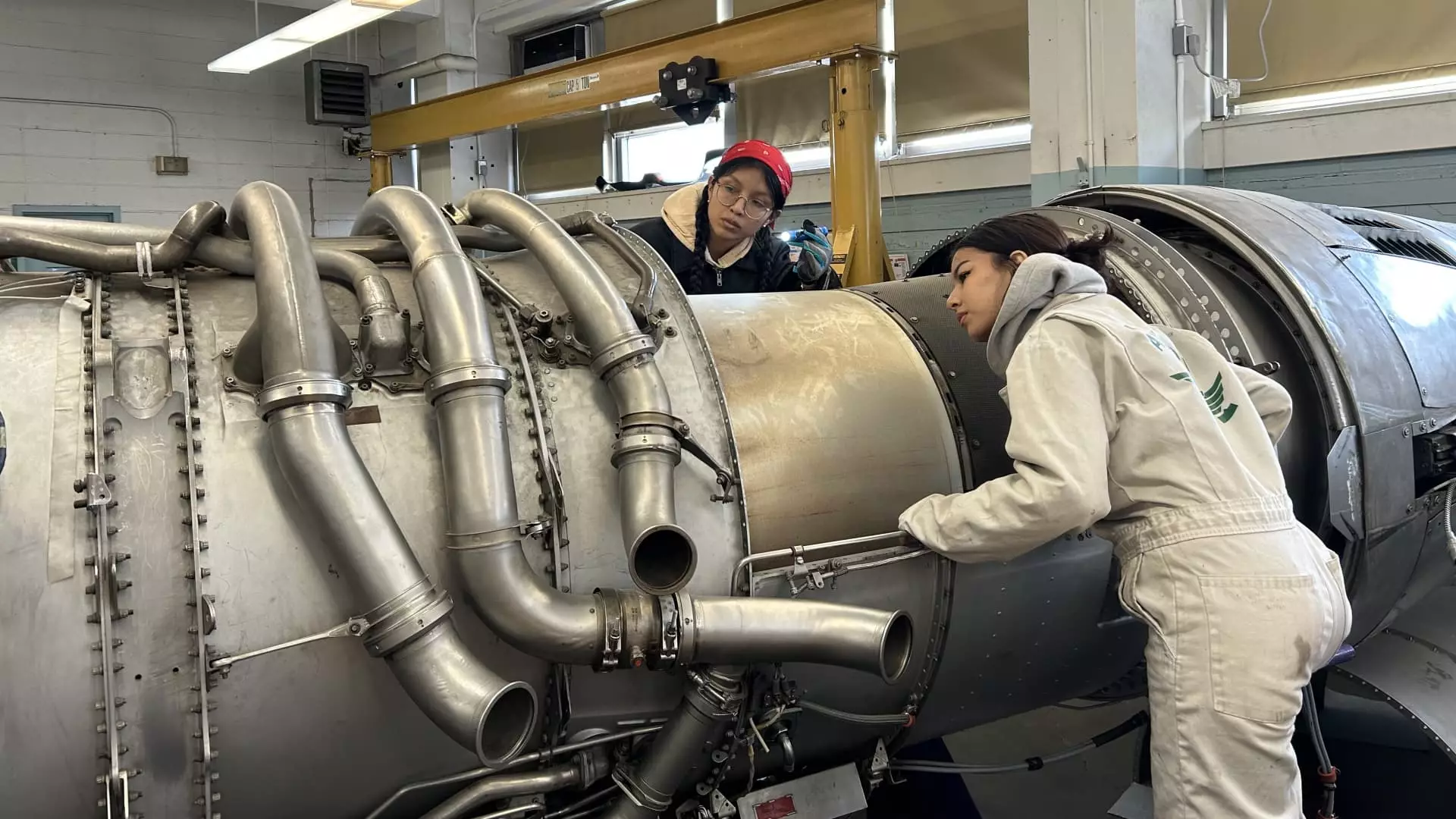The aviation industry is at a crossroads, facing a pressing crisis driven by an aging workforce and an alarming shortage of skilled labor. President Donald Trump’s assurances to enhance manufacturing jobs in the United States have yet to translate into concrete workforce solutions, particularly in the specialized realm of aviation mechanics. A joint 2024 report highlights a critical statistic: the average age of certified aircraft mechanics is 54, with nearly 40% over 60 years old. This demographic reality raises dire questions about the future of aircraft maintenance and manufacturing, with the U.S. poised to experience a shortfall of 25,000 technicians by 2028. This alarming gap isn’t merely theoretical; it’s a ticking time bomb that could undermine the entire sector.
COVID-19: The Catalyst for Loss and Change
The COVID-19 pandemic has served as an exacerbating factor in an already precarious situation. As airlines and manufacturers engaged in waves of buyouts and layoffs, countless skilled workers left the industry, either voluntarily or involuntarily. Christian Meisner, chief human resources officer at GE Aerospace, acknowledged the heavy talent drain during this unprecedented decrease in demand. Pre-pandemic, the sector experienced a surge in activity; post-pandemic, however, recovery has been sluggish at best. The erosion of the workforce, combined with the increased complexity of aircraft technology, poses a significant challenge for companies hoping to rebound.
In light of these challenges, it’s vital for businesses to recruit younger talent actively. Companies are investing in outreach programs to attract the next generation of mechanics, recognizing that the workforce they need is currently in high school. It is nothing short of a travesty that the aviation industry—often heralded as a cornerstone of American prowess—may falter merely due to an aversion to embracing the next generation.
Wages vs. Aspirations: The Dilemma
Compensation associated with these technical jobs is indeed lucrative—aircraft technicians can earn median salaries near $79,140, with potential earnings soaring to $130,000 at American Airlines with experience. Yet, this attractive pay fails to entice many prospective employees. The underlying reason may not simply be traditional notions of job prestige but a lack of awareness about the modern reality of the aviation sector.
The perception that aviation work is not high-tech or fulfilling still lingers, despite advancements that have made it quite the opposite. Companies like GE are pushing hard to reshape this narrative, demonstrating that the cutting-edge manufacturing environment they foster is a world away from the assembly lines of yesterday. With reports indicating stagnant perceptions from younger generations, it’s crucial that the industry takes a proactive stance to redefine what a career in aviation can offer.
The Road to FAA Certification: A Barrier to Entry
One of the most considerable hurdles prospective technicians face is the time required to obtain an FAA license. It can take years, placing an unnecessary strain on an already challenged recruitment pipeline. Yet the world is changing; students are beginning to prioritize vocational training over traditional four-year degrees. Meet Sam Mucciardi, a senior at Aviation High School in Queens, New York. His story epitomizes the shift in mindset. Schools like his are responding to industry demand by offering pathways to licensure that allow students to jump directly into a career, often right out of high school.
As evidenced by soaring applications—approximately 5,000 this year alone—there is a growing appetite among young individuals for careers in aviation. Schools are modifying their curriculums to align with industry needs, thereby improving job readiness. American Airlines’ initiatives to engage with schools and even junior highs underscore the urgency of informing young people that a future in aviation offers innovative opportunities that are very much aligned with the digital age.
The Broader Economic Implications
This situation touches on broader economic trends where manufacturing in the U.S. faces immense challenges. Despite the fixation on manufacturing as a sector of interest—implicating about 9% of U.S. employment—workers’ geographical immobility complicates the matter further. Unlike tech jobs based in Silicon Valley, aviation jobs are not centered in corporate hubs; they require a specialized skill set that local labor markets often fail to meet.
Large employers are gradually becoming aware of the perils surrounding this labor market, exemplified by the warnings from industry leaders about impending shortages. It is incumbent upon policymakers and employers alike to invest in solutions that provide not just short-term employment, but meaningful long-term careers built on skill, technology, and innovation.
Having a comprehensive strategy to attract, train, and retain the next generation of aviation professionals is crucial. This area isn’t merely a side note in America’s manufacturing narrative; it’s the backbone of a competitive and secure economy that thrives on innovation and skilled labor. The aviation sector has the potential to lead the charge in reviving American manufacturing, but only if it adapts and evolves to meet the needs of an emerging workforce.

